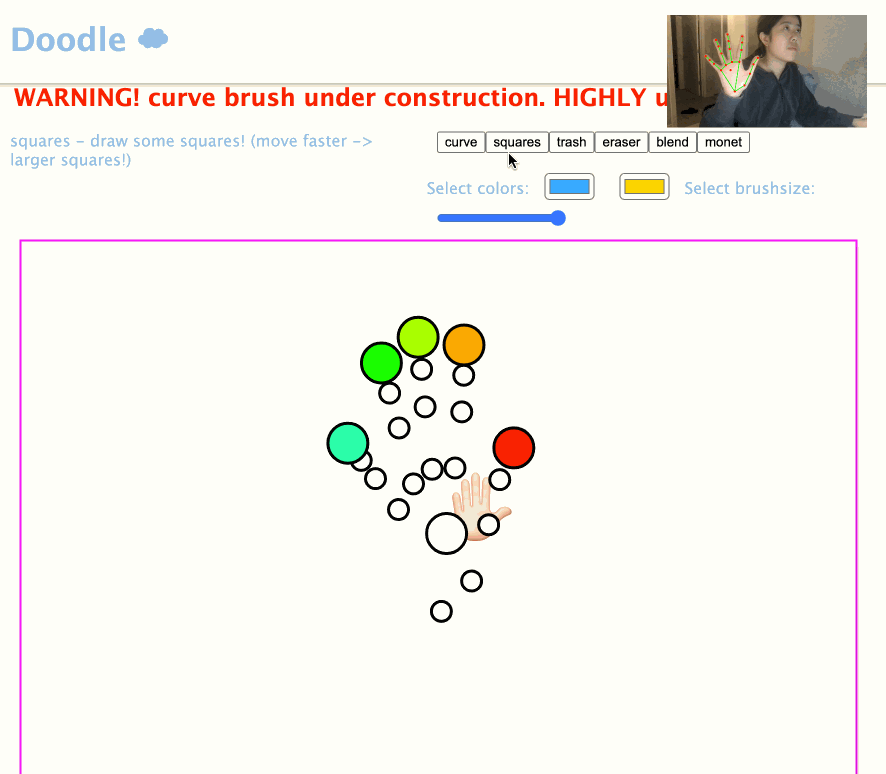Grace Wang
Creative Technologist & Researcher
Hi! I majored in Computer Science and Art, Theory, Practice (Fine Arts) at Northwestern University.
I explore the intersections of HCI, art, and creativity. I've had the pleasure of working with Haoqi Zhang, Duri Long, Brian Magerko, and Matthew Kay.
I’m trained to do HCI systems design research in the DTR program and have worked on topics ranging from self-regulation for innovation, ML for Creativity, AI literacy, to improving visualization for high-stake societal events.
In my spare time, I spend my time drawing, performing with my A cappella group, and exploring ways to enjoy life creatively. My special skills include dying inside when keeping up with Beethoven rhythms performing in my Choir but enjoying it, skateboarding, and getting free sake from bars in Japan.
Research Projects
OSADE
OSADE is a mentorship application that supports coaching of self-regulatory skills, ranging from metacognitive to emotional regulation, in Problem-Based Learning classrooms.
Knowledge Net
Knowledge Net is a collaborative, tangible tabletop museum exhibit where users construct characters by building semantic networks, aimed at teaching middle schoolers about knowledge representations in semantic networks.
Kernel Quest
Kernel Quest is a hands-on, interactive activity that teaches middle school students how CNNs use kernels to detect visual features. Students simulate a CNN by sliding the a plastic “kernel” between polarizer film sheets, revealing parts of a cartoon monster, noting observed features (e.g., eyes, wings) to guess the monster's identity.
LIVE-ELEX
Live Elex is a live election dashboard for the 2024 Presidential election that fosters trust by helping voters understand vote counting procedures, set expectations for upcoming processes and uncertainties, and distinguishing trends that are and aren't meaningful about the winner or malfeasance.
Qualitative Coding with LLMs
LLM-Qual is a theory-informed computational method to systematically evaluate inductive coding results by computationally transforming each coder's inductive coding results into a Code Space. We propose and operationalize 4 computational metrics for assessing Code Spaces: Coverage, Density, Novelty, and Divergence.
Computational Creativity Projects
ColorCoding Move-in
An activity I developed to visualize my loved-one's comfort level with different parts of my apartment when moving in with me. It started as an art project and developed into a digital tool.
Hand-Tracking Doodle
Hand-Tracking doodle allows users to draw by moving their hand in front of a camera and switching hand-gestures. Doodle aims to dismantle material barriers to creative engagement to facilitate casual creativity. No need for fancy brushes!
Casual Pollock
A predecessor of Hand-Tracking Doodle designed to inspire user's creativity in making abstract art. Includes 16 brushes made with Processing, some discrete, some continuous, some that creates continuously changing shapes with a lifespan.
WebGL Projects
3 WebGL projects I made in a Computer Graphics class: Fast food hot mess, 404 bear bun, and lighting shader.
Simple Animations
Some animations I made over the years
Parametric Systems
A parametric generator that responds to music and controls. Includes 6 parametric systems. For each parametric system, user can adjust population count and mutation parameter.













